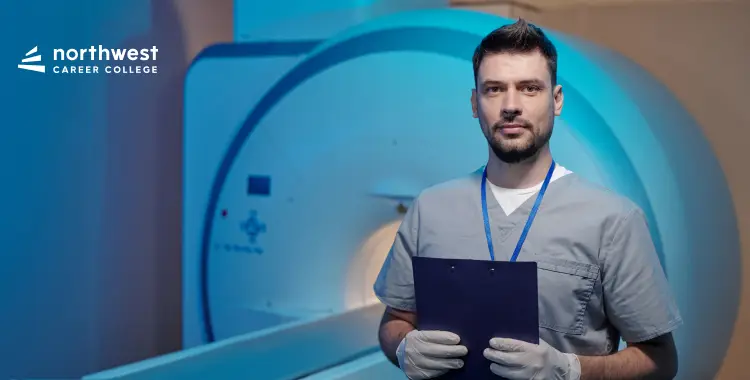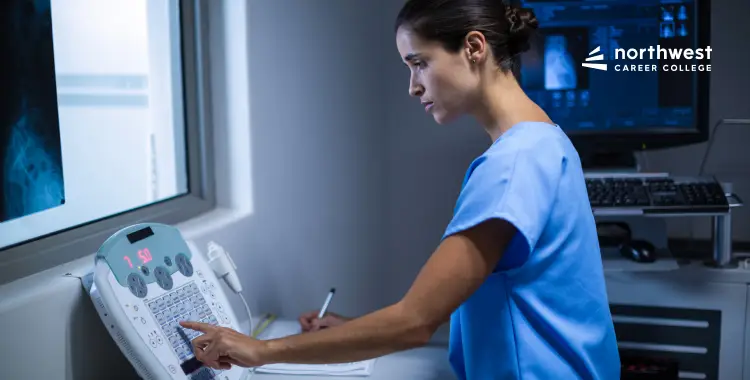Radiology Technician: A Career Worth Pursuing in 2026
- October 30, 2025
- 615 views
- 5 min read
Many people consider pursuing a career in the healthcare sector. Aside from their own passion to serve and provide medical care to patients, healthcare also offers financial stability. There are a lot of niches to choose from if you want to pursue a medical career, and one of them is becoming a radiographer.
Radiographers, also known as radiologic technologists, help in diagnosing and treating patients by using imaging technology such as X-rays, magnetic resonance imaging, and computed tomography scans. Now, the question most aspiring radiographers ask is whether this career is still worth pursuing in 2026 or in years to come, and this blog will give you a brief answer.

Table of Contents
Strong Employment Demand
A career in radiography is still a strong option if you want to be part of the healthcare sector. The demand for radiographers in the United States continues to grow. This rise is mainly due to three factors: an aging population that requires more diagnostic tests, the expanding use of imaging in healthcare, and advancements in medical technology.
The Bureau of Labor Statistics projects employment for radiologic and magnetic resonance imaging technologists to grow six percent from 2023 to 2033. This result shows faster growth compared to other jobs.
On top of that, about sixteen thousand job openings are expected every year over the next decade. Many of these roles open because older workers retire or move to other fields, which means there is steady room for new graduates like you.
Aging Population
One of the factors that is affecting the career demand for radiographers is the “aging” population. As many people live longer, they tend to face more medical issues. Many of the required medical requests from doctors or any other specialists are for imaging for accurate diagnosis.
Health conditions like bone fractures, joint problems, and chronic illnesses are common among older people. Doctors request imaging to detect the cause of the problem so they can give proper treatment. As the demand for this specific specialization in the healthcare sector continues to grow, it also presents opportunities for many radiographers.
Technology Driving Growth
Imaging machines today are more advanced than those of previous generations. The technology used by radiologists to see inside the body in ways that were not possible years ago has advanced significantly. As technology develops, radiographers need to operate this equipment and ensure accurate results. This creates an ongoing demand for professionals who know how to handle modern tools.
Competitive Salary
In 2024, the median income for radiographers in the United States was $78,980 per year, which works out to $37.97 per hour. That is higher than many other healthcare support jobs. While salary can vary by state, employer, and level of experience, the overall pay makes radiography a solid career choice. So, not only does this job give you stability, but it also rewards you with strong income potential.
Certification Steps
If you want to become a radiographer in the United States, you need certification. The American Registry of Radiologic Technologists, also known as ARRT, manages this process. Here are the main steps:
- Complete an Accredited Education Program – You must finish an associate degree or higher from a school recognized by the ARRT.
- Ethics Requirements – The ARRT requires you to show responsibility and good moral character.
- Pass the ARRT Examination – This written test covers patient care, imaging methods, and radiation safety.
- Obtain State Licensure (if required) – Some states also ask for additional licenses, so always check your state rules.
When you complete these steps, you earn the title Registered Technologist in Radiography, or R.T.(R). This certification shows employers that you are ready to work in the field.
Radiography Program
If you want to begin your path toward this career, Northwest Career College is a strong choice. The Radiography Program at Northwest Career College can be completed in as little as eighteen months. That means you could move from student to working professional in less than two years. The program is designed to give you both classroom knowledge and practical skills so you feel confident stepping into a healthcare setting.
Northwest Career College also understands that education can be costly. That is why we provide a range of financial aid options. These include scholarships, grants, and loans. Our Financial Aid team has years of experience helping students find the funds they need. So, if cost is holding you back, know that support is available to help you reach your goal.
Why Choose This Career
Radiography blends technology with patient care, pays well, and has steady demand. You also gain the satisfaction of knowing your work directly supports doctors in diagnosing and treating patients. Unlike some careers that might fade with automation, radiography requires skilled professionals who can work hands-on with both technology and patients. That makes it future-proof.
Enroll now at Northwest Career College in our Radiography Program. In as little as eighteen months, you can begin a career that provides stability, strong pay, and a chance to make a difference in the healthcare field.




